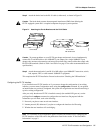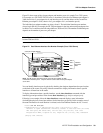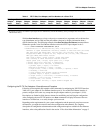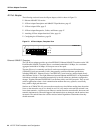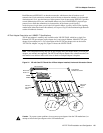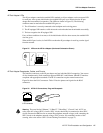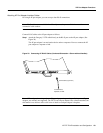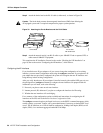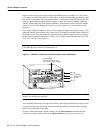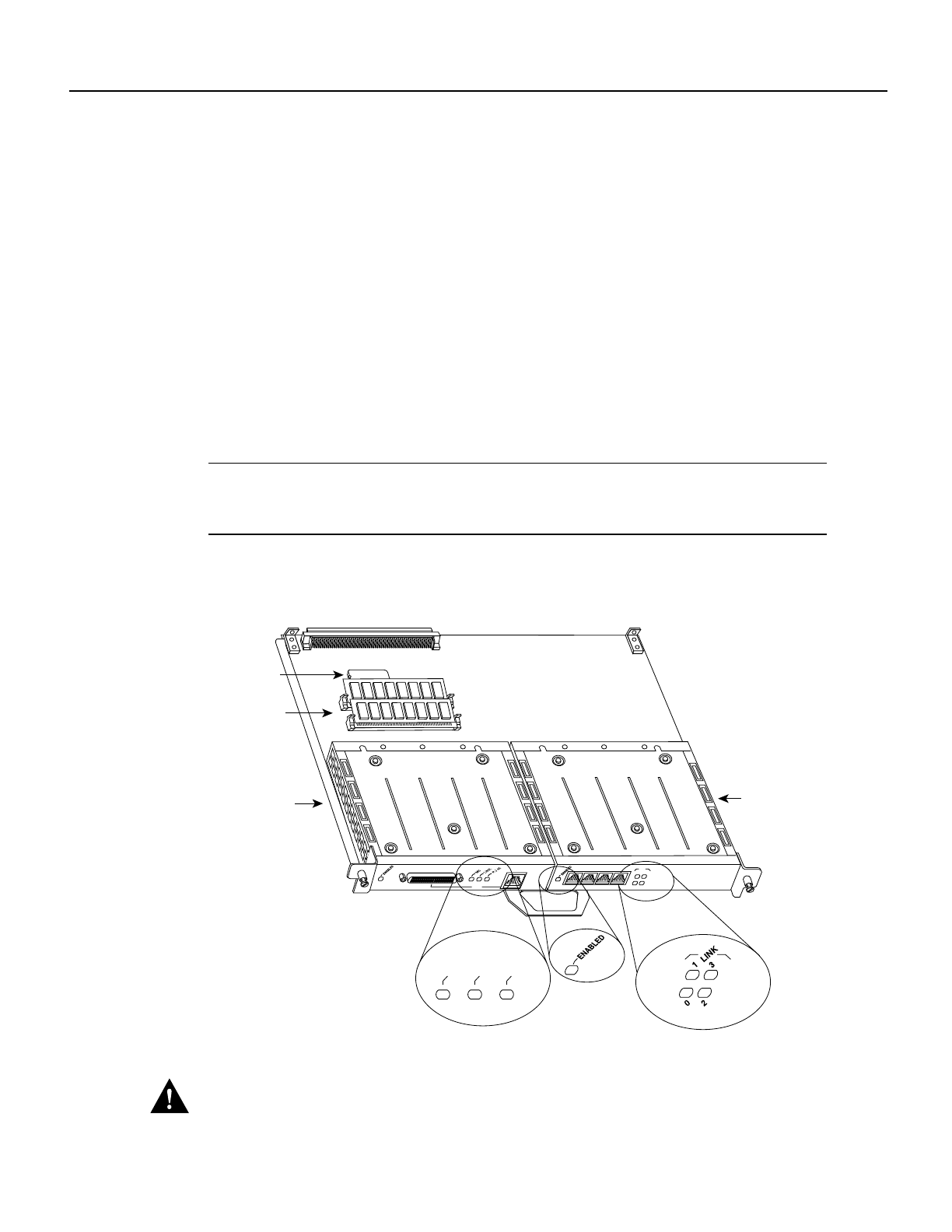
VIP-FE-TX/4E Installation and Configuration 45
VIP Port Adapter Functions
Both Ethernet and IEEE 802.3 are broadcast networks, which means that all stations see all
transmissions. Each station must examine received frames to determine whether it is the intended
destination and, if it is, pass the frame to a higher protocol layer for processing. IEEE 802.3 specifies
several different physical layers, and Ethernet defines only one. Each IEEE 802.3 physical layer
protocol has a name that summarizes its characteristics in the format speed/signaling
method/segment length where speed is the LAN speed in Mbps, signaling method is the signaling
method used (either Baseband or Broadband), and segment length is the maximum length between
stations in hundreds of meters.
4E Port Adapter Description and 10BASE-T Specifications
The 4E port adapter is currently only available on the VIP-FE-TX/4E, which has a single Fast
Ethernet (FE-TX) port adapter in port adapter slot 0, and a single Ethernet 10BASE-T (4E) port
adapter in port adapter slot 1. (For a description of the FE-TX port adapter, refer to the section
“FE-TX Port Adapter” on page 29.) Figure 24 shows the VIP-FE-TX/4E.
Note VIP configurations using only one 4E port adapter and a port adapter blank, or two 4E port
adapters, are currently not supported. The FE-TX and 4E port adapters have a handle attached, but
this handle is not shown to allow a full view of detail on each port adapter’s faceplate.
Figure 24 VIP with One FE-TX and One 4E Port Adapter Installed, Horizontal Orientation Shown
Caution
To prevent system problems, do not remove port adapters from the VIP motherboard, or
attempt to install other port adapters on the VIP motherboard.
H4711
DRAM
SIMMs
Microcode
Flash U17
Bus connector
ETHERNET-10BT
LINK
1
3
0
2
0
1
2
3
MII
LINK
RJ45
0
FAST ETHERNET
U2
U1
FE-TX in
port adapter
slot 0
4E in port
adapter
slot 1
Port adapter
handles not shown



